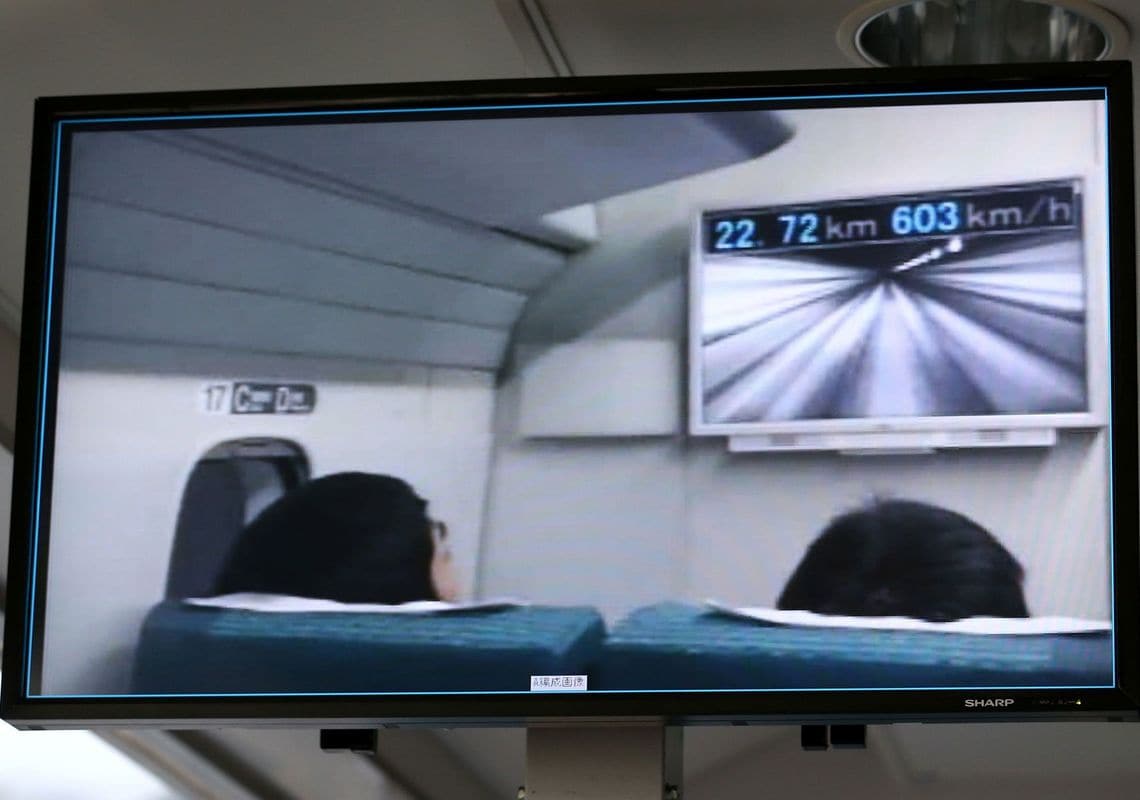
Why seeking faster speeds?
In order for the Japan Railways Central’s Chuo Linear Shinkansen to achieve a speed of 500km/h for commercial operations, it is designed to reach a maximum speed of 550km/h. In practice, however, an experimental train recorded a maximum speed of 581 km/h in 2003, and this has been certified in the Guinness Book of Records as well.
Starting from 2013, the experimental trains was switched to L0 series models, which would be used for commercial operations. On April 16th, they recorded a top speed of 590km/h, setting a new record for the fastest speed in the world.
Why, by the way, are those tests conducted at the speeds which exceeds commercial operating speeds? Mr. Yasukazu Endo, the general manager of the Yamanashi Test Center, says "So that we can collect data at high operating speeds and verify speed ranges in the design.” By knowing the range of speeds, it will search for possible areas to reduce cost and improve performance.
Based on simulations, JR Central already knows that the train can ran at the speed of 600km/h. Now, they want to know what makes difference between the simulations and actual test runs. Mr. Endo says,” The precision of the data required to operate trains with certainty at 500km/h will be greater at 600, as compared to operating at 550."
So, what does it feel like to ride at a speed of 600km/h? “One of the strengths of maglev is that it feels more stable the faster it goes,” Mr. Endo says. “It is actually more stable beyond speeds of 500 km/h. So, it was a very comfortable ride.”
The history of speeding up
Now that 600km/h is reached, the subsequent topics of interest have moved to whether it will continue to pursue even greater speeds, and whether it will be possible to operate at speeds of 600km/h for commercial operations.
Regarding the former, JR Central says, for now, they won’t seek for faster speeds, and will focus on tests for commercial operations. Regarding the latter, there will be no change in the commercial operating speed of 500km/h.
However, looking at the history of the Shinkansen shows that while the Tokaido Shinkansen did not exceed 210km/h when it commenced in 1964, the speed increased in small increments, and it now runs at a speed of 285km/h. The Tohoku Shinkansen currently runs at a speed of 320km/h.
If this pattern follows through, then even when maglev start its operations in 2027 at a speed of 500km/h, it will make improvements little by little, thus making it entirely possible for it to eventually reach commercial operating speeds of 600km/h.




